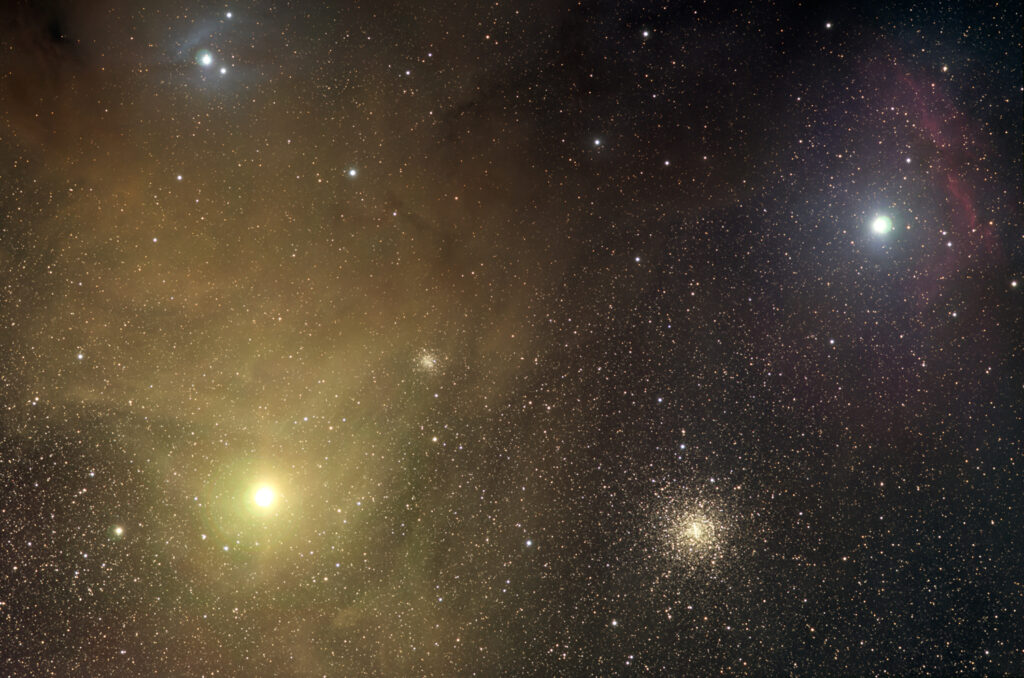Antares Region & Messier 4
Dust, Nebulae & Globular Cluster, Scorpius
- Description
- Technical
- Links
Antares designated α Scorpii (Latinised to Alpha Scorpii, abbreviated Alpha Sco, α Sco), is on average the fifteenth-brightest star in the night sky, and the brightest object in the constellation of Scorpius. Distinctly reddish when viewed with the naked eye, Antares is a slow irregular variable star that ranges in brightness from apparent magnitude +0.6 to +1.6. Often referred to as “the heart of the scorpion”, Antares is flanked by σ Scorpii and τ Scorpii near the center of the constellation.
Classified as spectral type M1.5Iab-Ib, Antares is a red supergiant, a large evolved massive star and one of the largest stars visible to the naked eye. Its exact size remains uncertain, but if placed at the center of the Solar System, it would reach to somewhere between the orbits of Mars and Jupiter. Its mass is calculated to be around 12 times that of the Sun.
Antares is the brightest, most massive, and most evolved stellar member of the nearest OB association, the Scorpius–Centaurus Association. Antares is a member of the Upper Scorpius subgroup of the association, which contains thousands of stars with a mean age of 11 million years, about 170 parsecs (550 ly) from Earth.
Antares appears as a single star when viewed with the naked eye, but it is actually a binary star, with its two components called α Scorpii A and α Scorpii B. The brighter of the pair is the red supergiant, while the fainter is a hot main sequence star of magnitude 5.5.
Messier 4 or M4 (also designated NGC 6121) is a globular cluster in the constellation of Scorpius. It was discovered by Philippe Loys de Chéseaux in 1745 and catalogued by Charles Messier in 1764. It was the first globular cluster in which individual stars were resolved.
Telescope: Astro Physics 105EDF Traveler f6
Mount: Astro Physics 1200GTO
Camera: SBIG STL-11000M
Guider: SBIG ST10XME/RCOS OAG
L: 24×10 mins = 240 mins, R: 20×10 mins = 200 mins, G: 18×10 mins = 180 mins, B: 20×10 mins = 200 mins
Total Imaging Time: 13h 40m
Data Imaged remotely over 7 nights during June & July 2008.
Data acquisition & Processing by David Churchill.
None

